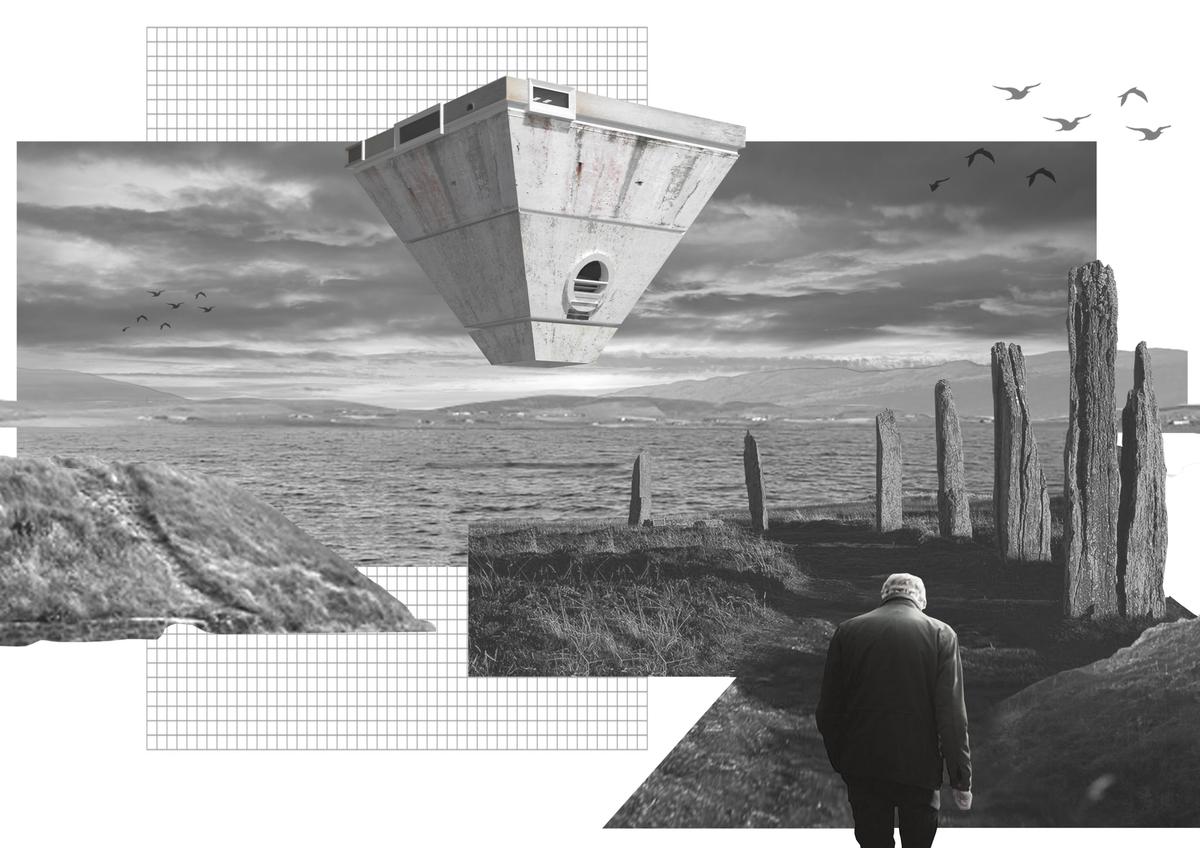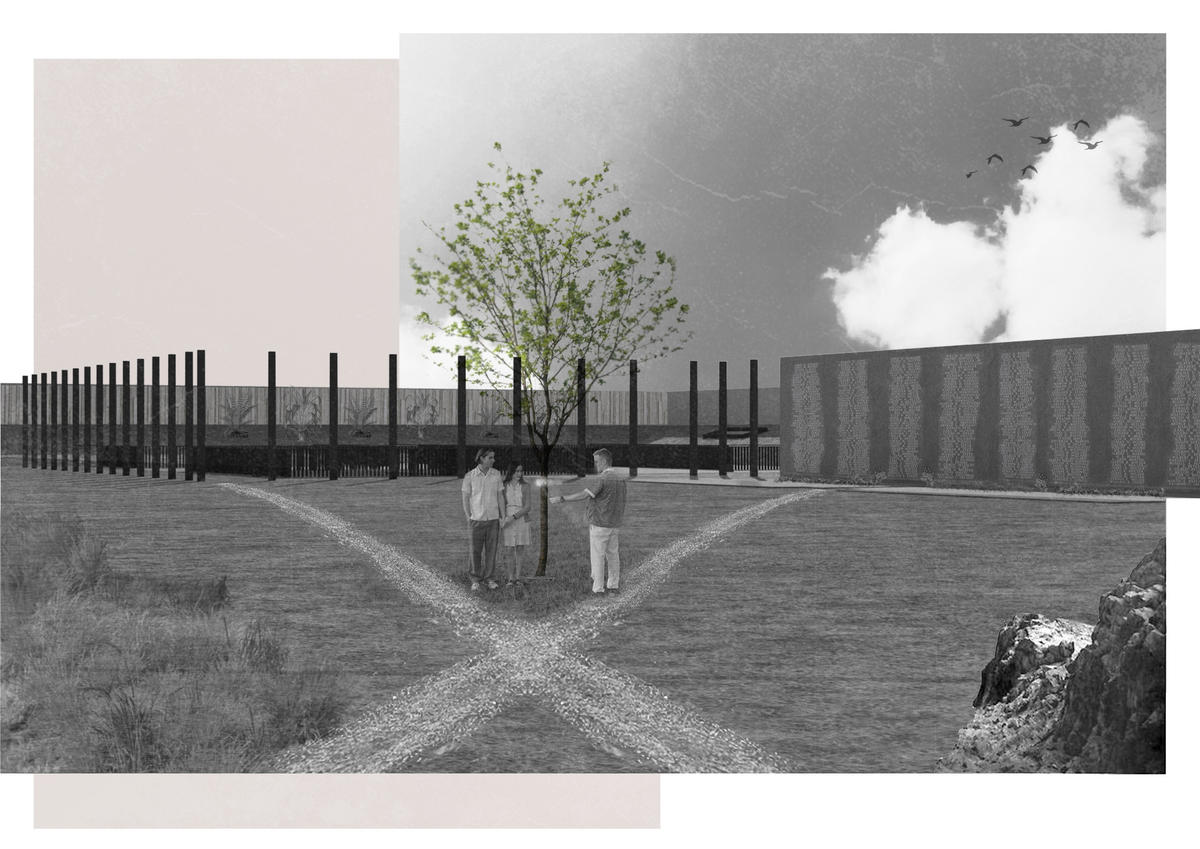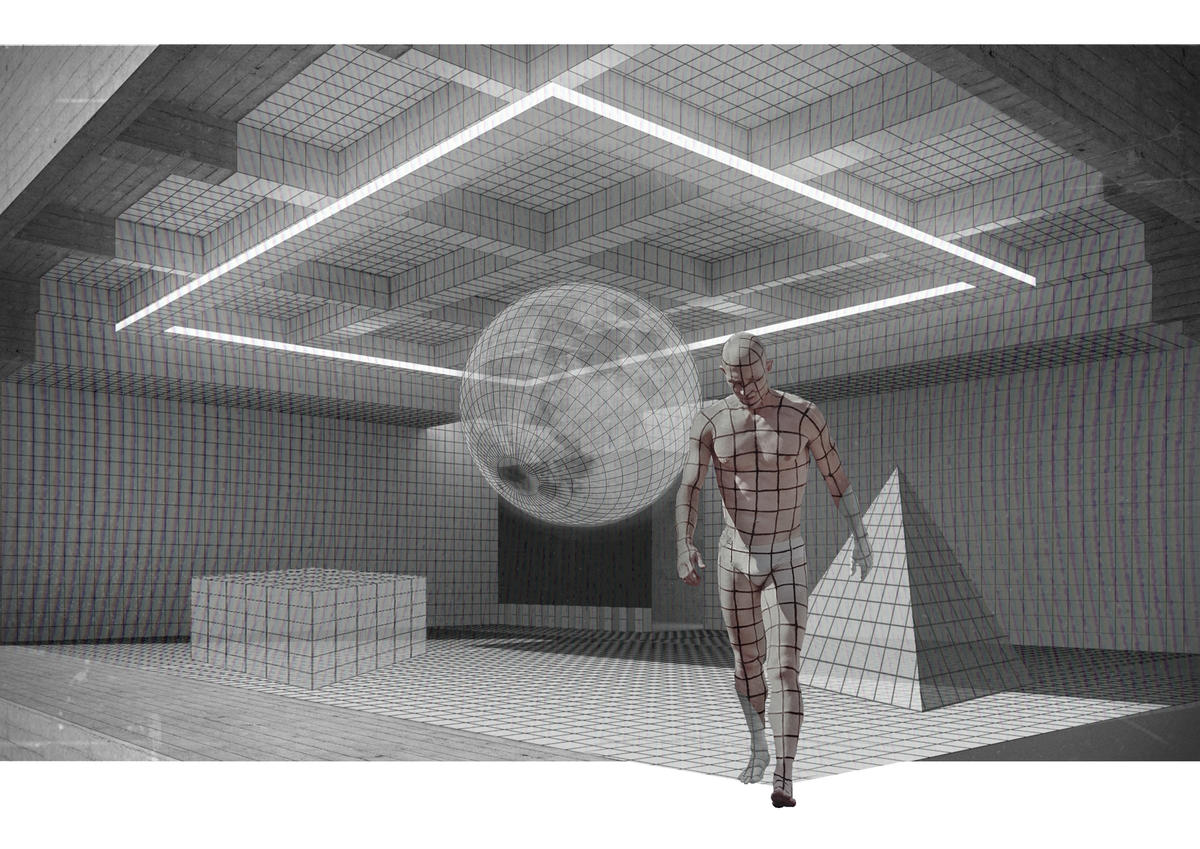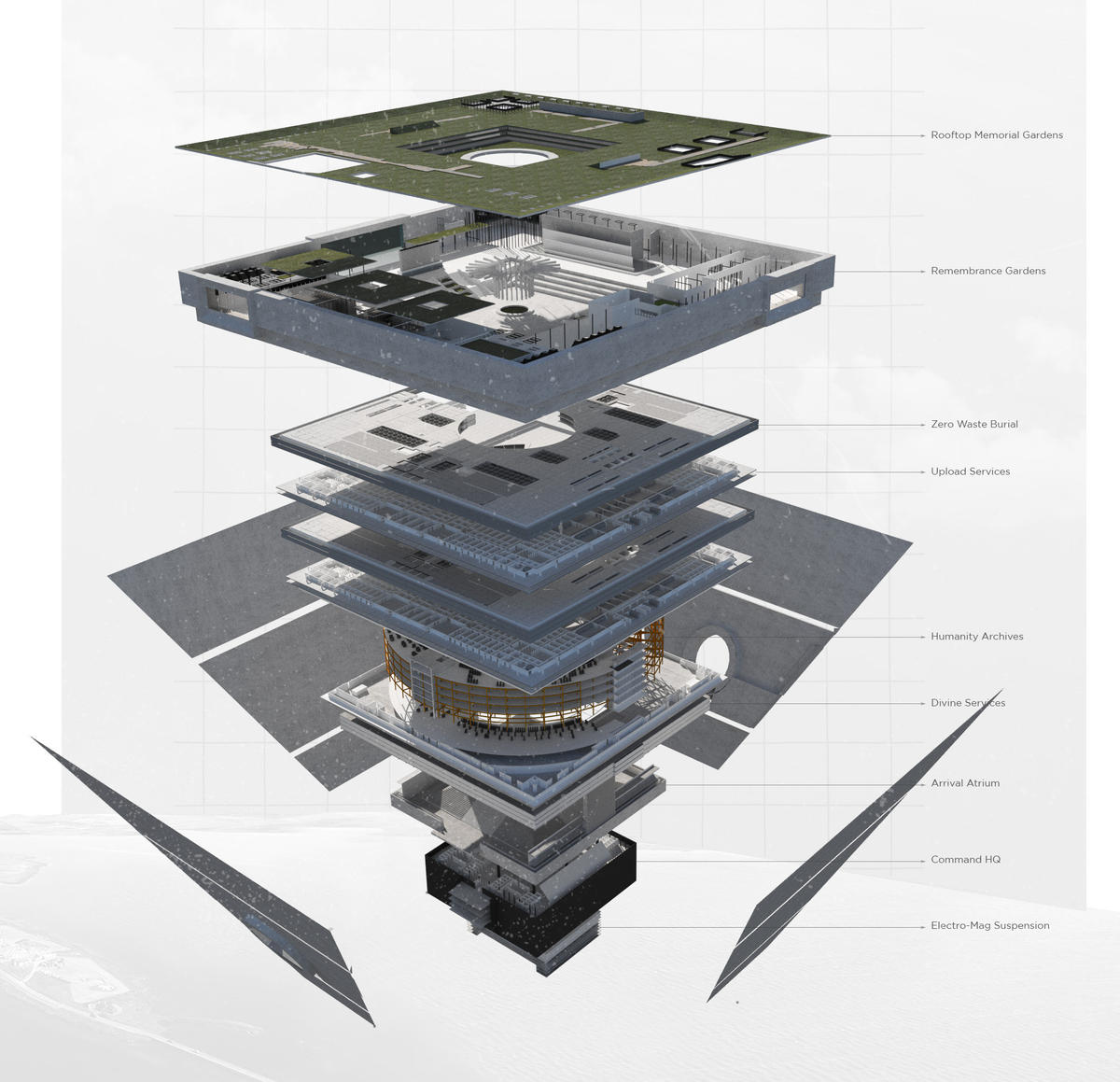Architectural Tectonics of Heaven






Collage of a digital Heaven
The architectural tectonics of heaven aims to question the role of religion in modern society, and more so a future one with an overarching emphasis on belief, belonging and ultimately death.
School/Level
Category
Year
Imagine a future where Heaven is no longer just a belief but exists as a simulated construct. Heaven is a digital world within our own.
This heaven allows Humanity to live on, forever, through a process called uploading. Your consciousness transferred onto a neural network, where it can be downloaded into various digital worlds or Heavens, the next step in human evolution, a change from corporeal to non-corporeal beings, eradicating death.
The Architectural Tectonics of Heaven explores the social engineering behind the concept of creating a quasi-heterotopic (digital) heaven that aims to critique modern theology through technology and architecture through the advent of a new (non) religion, the prerequisite conditions that define the relationship between philosophy, modern religion, art & science. Creating a transformative architecture supporting an emerging (non) religious belief system.
Manifesting into a form of cenotaph, this new technocentric (non) religion’s-built typology in the physical world remains open to all, however its primarily focus is on those who are without belief or religion, operating in a new post religion Zeitgeist. The Cenotaph, a new monument to death, is the last spaces you will experience before permanently uploading to your new heaven. Critiquing the idea of religious space and approach to death and heaven as a concept rather than an absolute, the Cenotaph and subsequently the new (non) religion approaches funerary architecture, a place of passing and remembrance, as circular.